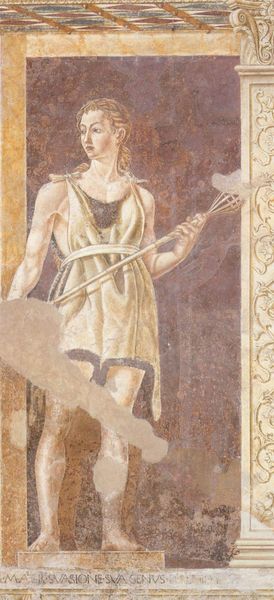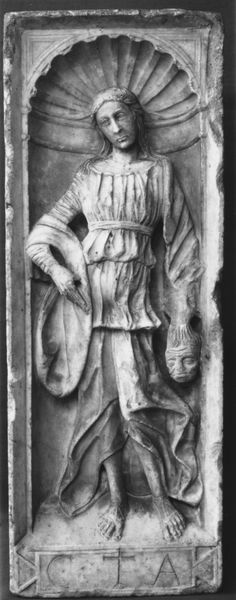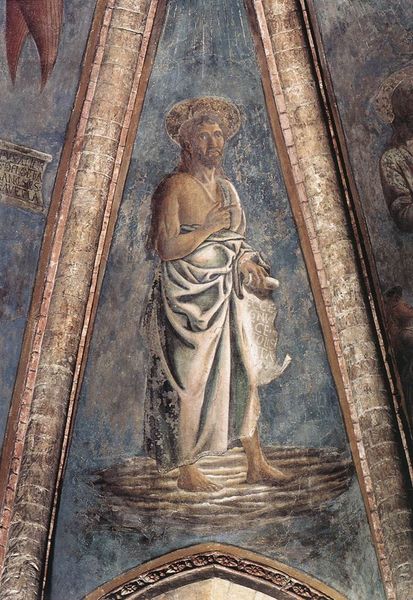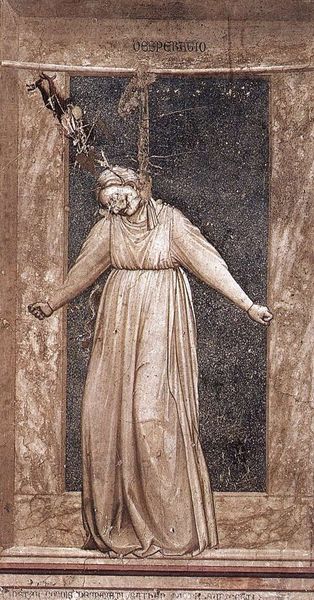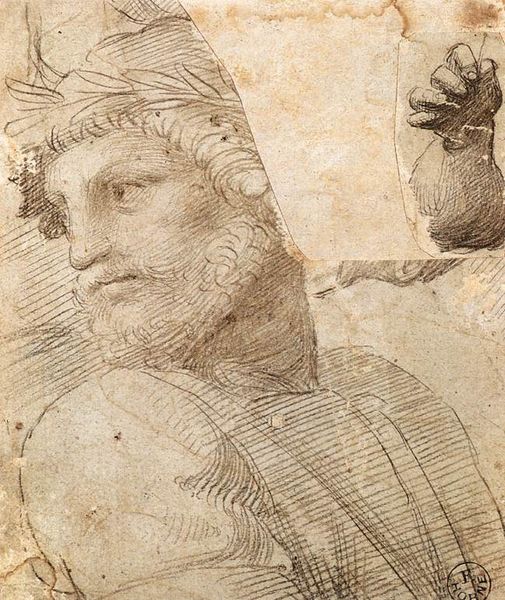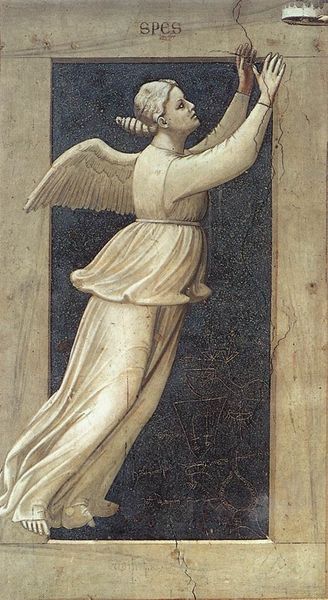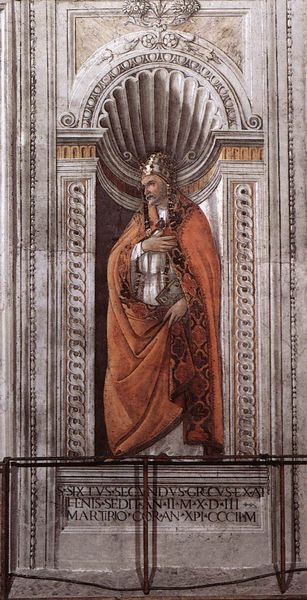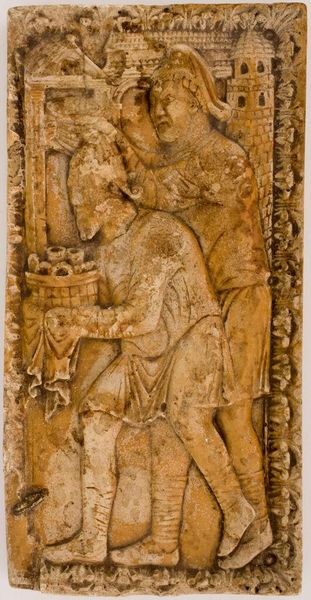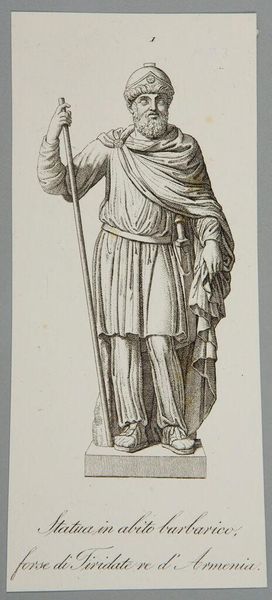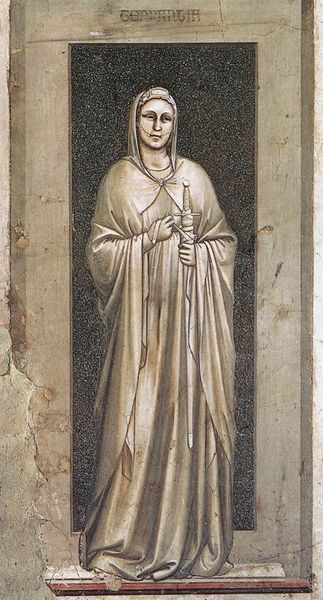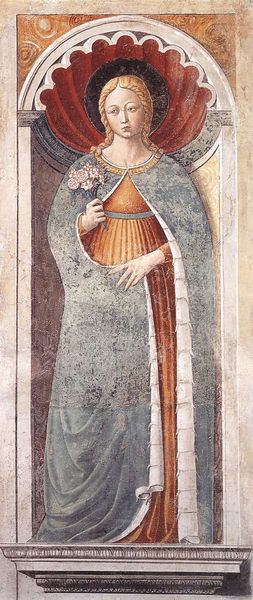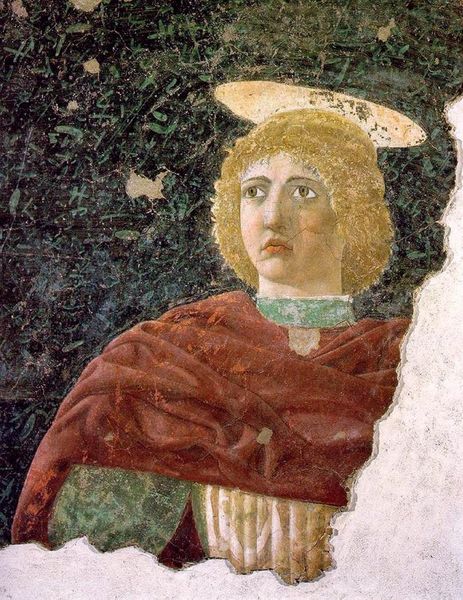
painting, fresco
#
medieval
#
narrative-art
#
painting
#
figuration
#
fresco
#
history-painting
#
italian-renaissance
Copyright: Public domain
Curator: Immediately striking is the rather strange appearance of this figure—almost comical, certainly awkward in its composition. Editor: And this, painted circa 1306, is "Foolishness" by Giotto. It’s a fresco found within the Scrovegni Chapel in Padua, Italy, part of a larger series of virtues and vices. Curator: Within that series, I see how this embodies more than simple humor. It's an indictment. His vacant expression, the phallic club he holds, that bizarre headdress… these aren’t random details. It speaks to systems of power and control that have historically silenced the marginalized. I wonder how this ties to class? Editor: The patronage of the chapel by Enrico Scrovegni is critical. He commissioned this cycle to atone for his family’s sin of usury, which situates it firmly within economic and religious contexts. These aren't simply depictions, but a moralistic tool designed for public viewing and self-reflection. The figures and location shaped by this message. Curator: I agree that it is a didactic display—the whole chapel operates that way—and it seems we should view these images now, as historical artifacts and through a modern interpretive lens. The awkward anatomy can be re-conceptualized as a defiance against conventional aesthetics. Do you agree? It calls to my mind the work of contemporary artists critiquing the male gaze and social norms. Editor: His influence on Renaissance art is undeniable in other ways—but yes, while you bring up an interesting thread, I hesitate. The artist did present what he saw. Do we have to use a purely academic language to interpret how this work of art operated then? We see his commitment to naturalism, an attempt to represent figures more realistically. Curator: But that “realism” itself is a construct! It serves to reinforce existing power dynamics within society. Who dictates what is real, what is beautiful? Art always expresses social or political meanings of a culture. This fresco challenges normative views of leadership and challenges ideas of morality in politics today, no? Editor: Giotto had a public mission to preach the scriptures, but ultimately "Foolishness," is less focused on today's challenges. But how interesting to place the same scene in various times! Thank you. Curator: I am thankful for that conversation too. A powerful demonstration how images impact lives and ideologies over the centuries.
Comments
No comments
Be the first to comment and join the conversation on the ultimate creative platform.
